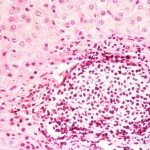Link to Pubmed [PMID] – 21911617
J. Physiol. (Lond.) 2011 Nov;589(Pt 22):5349-59
K(+)-Cl(-) cotransporters (KCCs) play a fundamental role in epithelial cell function, both in the context of ionic homeostasis and also in cell morphology, cell division and locomotion. Unlike other ubiquitously expressed KCC isoforms, expression of KCC2 is widely considered to be restricted to neurons, where it is responsible for maintaining a low intracellular chloride concentration to drive hyperpolarising postsynaptic responses to the inhibitory neurotransmitters GABA and glycine. Here we report a novel finding that KCC2 is widely expressed in several human cancer cell lines including the cervical cancer cell line (SiHa). Membrane biotinylation assays and immunostaining showed that endogenous KCC2 is located on the cell membrane of SiHa cells. To elucidate the role of KCC2 in cervical tumuorigenesis, SiHa cells with stable overexpression or knockdown of KCC2 were employed. Overexpression of KCC2 had no significant effect on cell proliferation but dramatically suppressed cell spreading and stress fibre organization, while knockdown of KCC2 showed opposite effects. In addition, insulin-like growth factor 1 (IGF-1)-induced cell migration and invasiveness were significantly increased by overexpression of KCC2. KCC2-induced cell migration and invasion were not dependent on KCC2 transport function since overexpression of an activity-deficient mutant KCC2 still increased IGF-1-induced cell migration and invasion. Moreover, overexpression of KCC2 significantly diminished the number of focal adhesions, while knockdown of KCC2 increased their number. Taken together, our data establish that KCC2 expression and function are not restricted to neurons and that KCC2 serves to increase cervical tumourigenesis via an ion transport-independent mechanism.
